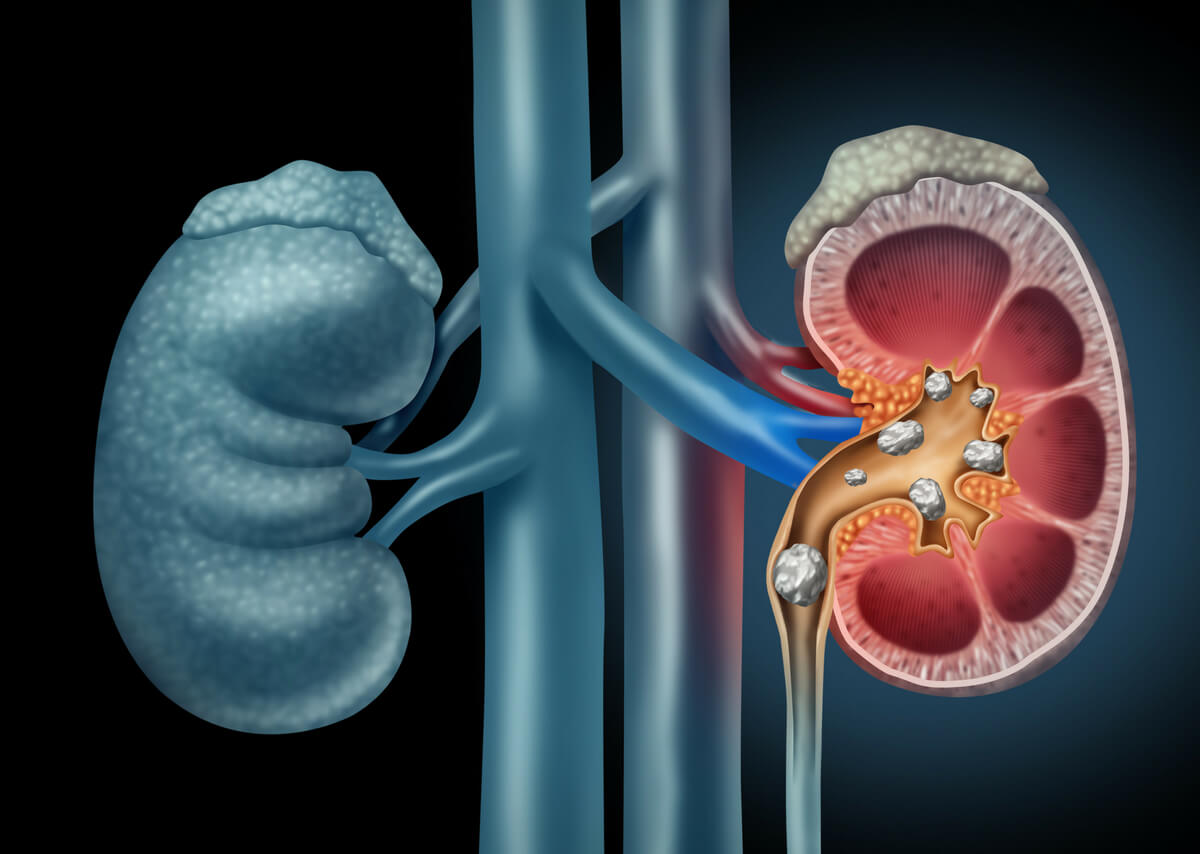Bladder stones simply put are stones inside the urinary bladder. They are also called vesical calculus. Like other stones in the urinary tract, bladder stones are composed of minerals excreted in the urine. They most commonly form when the bladder is not able to completely empty and some residual urine remains behind. Over time this urine gets concentrated which can also happen in periods of dehydration. As a result of urine concentration, the minerals get deposited which in turn form a nidus for stone formation. Over time these mineral deposits increase in size to form large stones.
What are the symptoms and signs of bladder stones?
Most of the times bladder stones are silent i.e. they do not cause any trouble. They are incidentally discovered on getting an ultrasound or an X-ray for some other problems. But at times they can cause problems such as:
- Intermittency of urinary stream i.e. the urine flow starts and stops or the urine flow suddenly gets poor while the passage of urine. This happens when the stone comes and blocks the bladder neck.
- Blood in urine or hematuria- The stone can irritate the mucosa of the bladder and cause some bleeding which comes out mixed with urine.
- Weak urinary stream- When the bladder stone becomes big in size and obstructs the outflow (bladder neck) then the urinary stream gets narrow and the patient may have to strain to pass urine.
- Pain in the lower abdomen
- Pain in one or both of the testes and penis
- Infection in urine leading to fever ( can be associated with chills and rigors)- This happens because the urinary bladder is never completely empty as the stone obstructs the complete outflow of urine. This residual urine is in turn subject to getting infected.
- The frequency of urination- This again happens because the bladder is never completely empty and hence the desire to go and pass urine again and again.
- Passing dark colored or cloudy and foul-smelling urine.
- Sudden retention of urine- This happens when a relatively small bladder stone gets stuck in the urine passage ( urethra) preventing the outflow of urine completely.
What are the causes of formation of bladder stones?
In most cases, bladder stones are, to begin with, small kidney stones. These stones pass from the kidney through ureters and enter the bladder. When such stones are unable to come out from the urine passage they grow in size over time due to further mineral deposits around the stone. In other cases whenever there is an obstruction to the outflow of urine from the bladder there is some amount of residual urine in the bladder at all times. This urine tends to get infected and also there is a concentration of urine leading to deposition of mineral crystals which form stones. The causes of outflow obstruction/incomplete emptying of the bladder are many such as;
- Enlarged prostate- The prostate gland in males enlarges with age and can lead to a reduced outflow of urine which in turn can lead to conditions suitable for stone formation.
- Stricture urethra- In patients whose urethral passage is narrowed due to previous trauma/infections/catheterization or inflammation, urine flow is weak and the bladder doesn’t completely empty leading to concentrated urine and stone formation.
- Neurogenic bladder- Patients with neurogenic bladder or atonic bladder are never able to completely empty their urine. At times they are on clean intermittent self-catheterization which also makes the urine susceptible to infections. Both incomplete emptying and repeated infections can lead to the formation of stones.
- Medical devices- Uncommonly an intra-uterine contraceptive device in a female may migrate to the bladder. In such a case a bladder stone may form over the device in time. Stones may also form over a urethral catheter kept inside for a long time for unrelated medical conditions.
- Children- The prevalence of bladder stones in children in developing countries is unfortunately very high. This is because of both a diet deficient in essential nutrients and vitamins and also a lack of access to clean drinking water. Some congenital medical conditions such as posterior urethral valves and spina bifida which lead to incomplete bladder emptying can also lead to stone formation.
How to diagnose a bladder stone?
Your treating urologist after listening to your symptoms and physical examination may suspect the presence of bladder stones and may order a few tests to confirm the diagnosis.
- Urine examination- This includes a urine routine and microscopy to look for the presence of mineral crystals as well as a culture and sensitivity test to rule out the presence of infection.
- Ultrasound- This is a first line test as there is no radiation exposure to the patient. This test besides telling about the presence of bladder stones also tells us about the condition of the kidneys and the completeness of bladder emptying.
- X-ray KUB- Any radio-opaque stone in the bladder can easily be seen on an x-ray.
- IVP- This test is performed only if the kidney functions of the patient are within the normal range. In this, a dye/contrast is given to the patient via an injection and x-rays are taken at various time intervals. Because the dye/contrast is excreted by the kidneys in the urine these tests tell us about the normal functioning of the urinary system besides telling the presence of stones.
- NCCT-KUB- A non-contrast CT scan is the investigation of choice for diagnosing stones of the urinary system. The advantage of this investigation is that not only the presence of stone can be diagnosed but also it tells us about the exact size of the stone and based on Hounsfield units it can also give us an idea about the composition of the stone.
How to treat bladder stones?
Once diagnosed the bladder stones can be dealt with endoscopically or by open surgical methods.
- Endoscopic Method - In this procedure, the doctor will insert a thin metallic tube called cystoscope inside your bladder through your urethral passage. The end of this tube is connected to a camera and light source enabling visualization of the inside of your bladder on a screen. After this, the stone is broken into small pieces using either laser (Holmium laser) or an ultrasound-based energy source. The small pieces of stones are removed and a urinary catheter is placed inside the bladder at the end of the procedure. This catheter can be removed in a day or two.
- Open Surgical Method - In cases where the stone is very large or there are multiple large stones inside the bladder or the urethral passage is very narrow (stricture urethra), the urologist may perform open cystolithotomy. In this procedure, a small incision is given in your lower abdomen and the bladder is opened under the vision and the stones are removed. Following this, the wound in the bladder is closed using absorbable sutures and a urethral catheter is left in situ for around ten days to two weeks.
Prevention
Bladder stones are caused by a myriad of medical conditions. But some general precautions sh
- Adequate fluid intake to prevent dehydration and concentration of urine.
- If suffering from symptoms of enlarged prostate then consult your urologist to treat the condition medically or surgically as indicated.
- A patient of the neurogenic bladder should ensure adequate emptying of the bladder by performing clean inteould be followed to prevent the formation or recurrence of bladder stones such as;rmittent self-catheterization.
- Narrowing in the urethral passage(stricture urethra) should not be ignored and corrected surgically.




